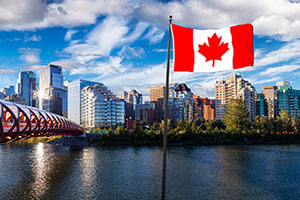Abstract
The Canadian flag, also known as the "Maple Leaf," is a symbol of Canada's identity and values. This article provides an overview of the Canadian flag, discussing its history, design, symbolism, and significance. The significance of the flag lies in its representation of Canada's history, unity, diversity, and values of peace, justice, and freedom. Overall, the Canadian flag serves as a powerful symbol that unifies and represents the Canadian people.
Introduction
The Canadian flag, known as the "Maple Leaf," was officially adopted on February 15, 1965. It replaced the "Red Ensign," which was the previous national flag. Designed by George F. G. Stanley and John Matheson, the flag consists of a red field with a white square in its center, featuring a red 11-pointed maple leaf.
History
The idea of a distinctive Canadian flag emerged in the late 1950s, when Lester B. Pearson, a prominent Canadian politician, proposed the creation of a new flag to replace the Red Ensign. Pearson believed that Canada needed a flag that reflected its own identity and distinctiveness, separate from its colonial past. The process of choosing a new flag involved extensive debates and discussions among politicians and the general public.
In 1964, after a long and sometimes contentious debate, the new Canadian flag was finally chosen. Its design, featuring the red maple leaf, was seen as a symbol that resonated with Canadians across the country. The flag was officially unveiled and raised for the first time on February 15, 1965, during a ceremony on Parliament Hill in Ottawa.
Design
The Canadian flag's design is simple yet powerful. The red field represents the sacrifices made by Canadians in various wars and conflicts. The white square symbolizes peace, neutrality, and honesty, which are essential values for the Canadian people. The red 11-pointed maple leaf in the center is a national symbol that represents unity, diversity, and natural beauty.
Advertisements
The ratio of the flag's width to its length is 1:2. The shade of red used in the flag, known as "Canadian red," was precisely defined and standardized to ensure consistency in its reproduction across different mediums.
Symbolism
The Canadian flag is a symbol of Canada's history, unity, diversity, and values. The red maple leaf represents the country's natural beauty and resources, as well as its cultural heritage. It symbolizes unity by highlighting the diverse regions, cultures, and people that make up Canada.
The flag also embodies Canada's values of peace, justice, and freedom. It serves as a reminder of the country's commitment to international peacekeeping and its respect for democratic principles, human rights, and equality.
Significance
The Canadian flag holds immense significance for the country and its people. It is a unifying symbol that binds Canadians together, regardless of their differences. The flag instills a sense of pride, loyalty, and patriotism among citizens and serves as a visual representation of Canadian identity.
Internationally, the Canadian flag is recognized and respected around the world. It has become a recognized symbol of Canada's reputation as a peaceful, tolerant, and inclusive nation. The flag is proudly flown in a variety of settings both within Canada and abroad, including government buildings, schools, and Canadian embassies.
Conclusion
The Canadian flag, with its simple yet powerful design and symbolic representation, reflects the rich history, diverse culture, and core values of Canada. It represents unity, diversity, peace, and freedom. The flag holds deep meaning for Canadians and serves as a source of pride and identity. The "Maple Leaf" will continue to be a symbol that unifies and represents the Canadian people for generations to come.




